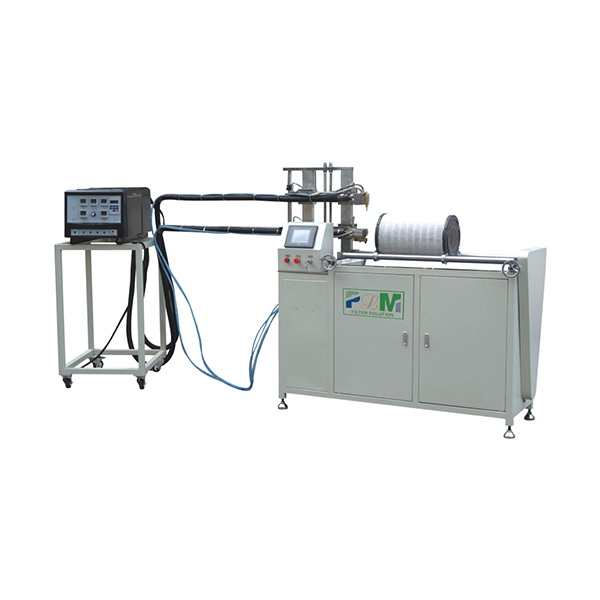szept . 28, 2024 03:23 Back to list
PP Air Filter Production Machinery for Efficient Manufacturing Solutions
The PP Air Filter Producing Machine Revolutionizing Air Purification
In today's world, where air quality is increasingly compromised by pollution and industrial emissions, the demand for effective air purification solutions has never been more critical. Among the innovative technologies that have emerged to address this challenge is the PP air filter producing machine. This machine plays a vital role in the manufacturing of polypropylene (PP) air filters, which are essential for maintaining clean air in various environments, including homes, offices, and industrial facilities.
Understanding Polypropylene Air Filters
Polypropylene is a thermoplastic polymer that is widely used for producing air filters due to its excellent filtration properties and resistance to chemicals. PP air filters are known for their ability to capture airborne particles, including dust, pollen, smoke, and bacteria, effectively improving indoor air quality. The use of polypropylene materials in filter production ensures that the filters are lightweight, durable, and resistant to moisture, making them ideal for various applications.
How PP Air Filter Producing Machines Work
The PP air filter producing machine is a specialized piece of equipment designed to automate the production process of air filters. The technology involved in these machines can vary, but most utilize advanced techniques such as melt-blown technology, which is crucial for creating fine fiber mats that enhance filtration efficiency.
1. Material Feeding The process begins with feeding polypropylene resin pellets into the machine. These pellets are heated until they melt, forming a viscous liquid that can be spun into fibers.
2. Melt-Blown Process The molten PP is extruded through a spinneret, creating fine strands of fiber. Hot air is then used to blow these fibers onto a conveyor belt, where they form a nonwoven mat. This mat is thick enough to trap particles while remaining porous enough to allow airflow.
3. Layering and Bonding After the nonwoven mat is formed, multiple layers may be added to enhance the filter's performance. These layers can be bonded using different methods, such as thermal bonding or adhesive bonding, ensuring that the final product meets specific filtration standards.
4. Cutting and Shaping Once the desired thickness and structure are achieved, the mat is cut into the required dimensions to fit various filter frames. This step is crucial for ensuring that the filters are compatible with different air purification systems.
pp air filter producing machine

5. Quality Control Finally, each batch of filters undergoes rigorous quality control tests to verify their effectiveness and compliance with industry standards. This process includes testing for filtration efficiency, pressure drop, and overall mechanical integrity.
Advantages of Using PP Air Filter Producing Machines
The automation provided by PP air filter producing machines significantly enhances the efficiency and consistency of filter production. Some of the key advantages include
- Higher Production Rates These machines can produce a large volume of air filters in a shorter time frame compared to manual methods, meeting the growing demand for clean air solutions.
- Cost-Effectiveness Automation reduces labor costs and minimizes waste, making the production process more economical for manufacturers.
- Consistent Quality With precise control over the manufacturing process, these machines ensure that each filter meets stringent quality standards, leading to higher customer satisfaction.
- Flexibility Modern machines can be adjusted to produce different types and sizes of filters, allowing manufacturers to cater to diverse market needs.
Conclusion
As air pollution continues to pose a threat to public health and environmental safety, the importance of efficient air filtration systems cannot be overstated. The PP air filter producing machine represents a significant advancement in this field, enabling the production of high-quality, effective air filters. By investing in such technology, manufacturers can not only contribute to improved air quality but also enhance the sustainability of their operations. As we move forward, embracing innovation in air filtration technology will be essential in combating the rising challenges of air pollution and ensuring a healthier future for all.
-
High-Efficiency Active Carbon Air Filter for Air Purifier | Odor & Allergen Removal
NewsJul.23,2025
-
Active Carbon Air Filter for Air Purifier – High Efficiency Filtration Solution
NewsJul.22,2025
-
Durable Sintered Porous Metal Filter Tube Cup & Machines
NewsJul.22,2025
-
Effective Active Carbon Air Filter for Purifiers | Eliminate Odors
NewsJul.21,2025
-
PLJT-250-25 Full-auto Turntable Clipping Machine | Efficient Automation
NewsJul.20,2025
-
Cheap PLJY109-500 Full-Auto HDAF Expanded Mesh Spiral Coiling Machine - High Efficiency & Quality Manufacturer
NewsJul.08,2025
